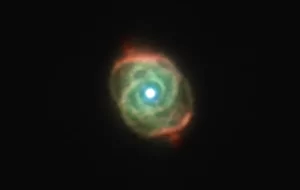
Introduction
In the vast tapestry of the natural world, avian diversity captivates the imagination with its kaleidoscope of colors, shapes, and sizes. Yet, amidst the splendor of feathers and song, lies a question that challenges conventional notions of beauty: What is the ugliest bird in the world? Departing from traditional perceptions, this exploration delves into the realm of avian aesthetics, seeking to uncover the unexpected allure hidden within the unconventional.
The Marabou Stork
Description of appearance
The Marabou Stork, with its bald head, wrinkled neck, and scraggly feathers, commands attention with its peculiar visage. Standing tall with a wingspan of up to 3.2 meters, this scavenger casts an imposing silhouette against the African savannah.
Habitat and behavior
Found in sub-Saharan Africa, the Marabou Stork frequents rivers, lakes, and garbage dumps in search of carrion and scraps. Its scavenging habits and opportunistic nature contribute to its unsavory reputation among observers.
Ecological importance
Despite its unassuming appearance, the Marabou Stork plays a vital role in ecosystem dynamics, serving as nature’s cleanup crew by consuming decaying organic matter and controlling disease spread. Its presence highlights the interconnectedness of species within complex ecological webs.
The Shoebill
Unique physical features
The Shoebill, aptly named for its distinctive shoe-shaped bill, cuts an imposing figure with its stoic demeanor and prehistoric appearance. Its towering stature and piercing gaze evoke a sense of ancient mystique, drawing fascination from bird enthusiasts and researchers alike.
Adaptations for survival
Endemic to the swamps and marshes of central and east Africa, the Shoebill possesses specialized adaptations for its watery habitat. Its massive bill, resembling a formidable weapon, enables precise hunting of fish, frogs, and small mammals, showcasing the ingenuity of evolutionary design.
Conservation status
Despite its iconic status, the Shoebill faces threats from habitat loss, wetland degradation, and human disturbance. Conservation efforts focused on habitat preservation and community engagement are essential for safeguarding the future of this unique species.
The Andean Condor
Majestic yet unconventional appearance
The Andean Condor, with its impressive wingspan exceeding three meters, exudes an air of majesty and grandeur. Yet, its bald head, wrinkled neck, and somber expression present a stark contrast to traditional ideals of avian beauty, challenging perceptions with its raw, rugged allure.
Symbolism and cultural significance
Widely revered as a symbol of power and freedom in Andean culture, the Andean Condor holds a prominent place in indigenous mythology and folklore. Its soaring flights and regal presence inspire awe and reverence, embodying the spirit of the Andes.
Threats and conservation efforts
Despite its symbolic significance, the Andean Condor faces threats from habitat loss, poaching, and lead poisoning. Conservation initiatives focused on captive breeding, habitat restoration, and community education are crucial for ensuring the survival of this iconic species.
Beauty in Diversity
Appreciating unconventional aesthetics
In the realm of avian aesthetics, beauty transcends traditional norms, embracing the diversity of forms and functions shaped by evolutionary forces. Each species, whether conventionally attractive or not, contributes to the rich tapestry of life, offering insights into the complexities of adaptation and survival.
The importance of conservation
As stewards of the natural world, it is our collective responsibility to safeguard vulnerable species and their habitats from anthropogenic threats. By supporting conservation efforts and promoting sustainable practices, we can ensure a brighter future for all creatures, great and small.
Finding beauty beyond appearances
Beyond the surface of feathers and flesh lies a world of intricate behaviors, ecological interactions, and evolutionary marvels waiting to be discovered. By delving beneath the veneer of aesthetics, we can uncover the hidden beauty of each species, enriching our understanding and appreciation of the natural world.
Conclusion
In the pursuit of avian aesthetics, the quest for the world’s ugliest bird reveals a deeper truth: beauty is subjective, fluid, and boundless. Through an exploration of unconventional forms and functions, we gain a newfound appreciation for the rich tapestry of life, celebrating the diversity that defines our planet. As we continue to unravel the mysteries of the natural world, may we embrace the beauty within the unexpected, forging connections that transcend the boundaries of perception.




